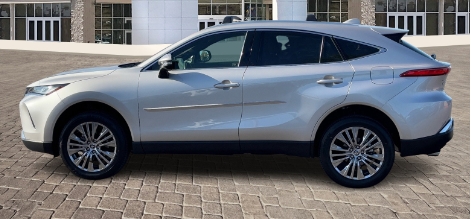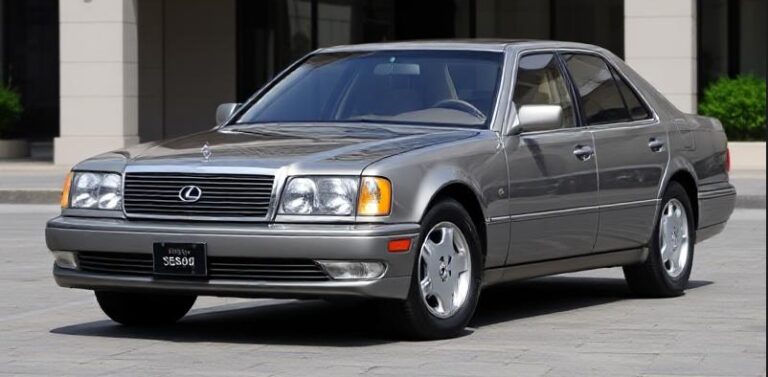The Evolution of the Audi e-tron
The automotive industry has undergone a significant transformation in recent years, driven by the urgent need for sustainable mobility solutions. Among the pioneers leading this charge is Audi, a brand renowned for its engineering excellence and innovative design. The Audi e-tron, launched as the German automaker’s flagship electric vehicle (EV), exemplifies Audi’s commitment to electrification and technological advancement. This article traces the evolution of the Audi e-tron, detailing its production timeline, models, trim levels, and key features from inception to the present.
The Birth of the Audi e-tron (2018–Present)
Introduction and Launch (2018):
The Audi e-tron was officially unveiled in 2018 as a 2019 model year vehicle. It marked Audi’s first fully electric production model designed to compete in the premium EV segment. The e-tron was introduced as a luxury, performance-oriented SUV with a focus on comfort, advanced technology, and sustainable mobility.
Design and Platform:
Built on the Volkswagen Group’s MEB platform, the e-tron features a sleek, aerodynamic design optimized for efficiency. Its dimensions echo those of traditional mid-size SUVs, with a spacious interior and a distinctive, modern aesthetic characterized by sharp lines and a prominent grille that integrates seamlessly with the LED headlights.
2019–2022: The Early Years and Model Range
2019 Model Year (Introduction):
The initial launch of the Audi e-tron included:
- Audi e-tron 55 Quattro: The flagship model at launch, equipped with a 95 kWh lithium-ion battery (usable capacity approximately 86 kWh). It featured dual electric motors (one on each axle) providing all-wheel drive, with a combined output of 402 horsepower (up to 496 hp in boost mode). The vehicle could accelerate from 0–60 mph in around 5.5 seconds and offered an estimated range of approximately 204 miles (WLTP).
Trim Levels and Features:
- Premium: The base trim, offering standard luxury features, Audi’s MMI infotainment system, leather seating, panoramic sunroof, and advanced driver assistance.
- Premium Plus: Added amenities such as a Bang & Olufsen sound system, virtual cockpit, and additional driver-assist features.
- Prestige: Included top-tier features like parking assist, a 360-degree camera system, and exclusive interior trim options.
Charging and Technology:
The e-tron supported DC fast charging at up to 150 kW, enabling approximately 80% charge in about 30 minutes. It also featured standard Level 2 charging capabilities.
2020 Model Year:
For 2020, Audi introduced minor updates, including software improvements for range estimation and charging efficiency. The lineup remained consistent with the 2019 models.
Additional Variants:
- e-tron Sportback (2020): A coupe-style variation offering a sleeker roofline and slightly lower cargo capacity but improved aerodynamics and slightly increased range (up to approximately 222 miles WLTP). The Sportback was positioned as a sportier and more stylish alternative, with similar powertrain options.
2021–2022: Expansion and Refinements
2021 Updates:
Audi continued refining the e-tron lineup with software updates enhancing range, charging speed, and driver-assistance systems. The e-tron 55 Quattro remained the primary model, with the following notable features:
- Enhanced Infotainment: Larger screens, improved voice recognition, and smartphone integration.
- Driver Assistance: Standard adaptive cruise control, lane departure warning, and parking assist.
Introduction of Additional Variants:
- e-tron S (2021–2022): The high-performance variant, introduced in 2020 and available through 2022, featuring a more powerful 55 kWh battery pack and upgraded motors. It produced a combined 496 hp (with boost mode) and accelerated from 0–60 mph in about 4.3 seconds. The S model was distinguished by sportier styling cues, exclusive wheels, and sport-tuned suspension.
Range and Charging:
The e-tron S offered a slightly lower range (around 218 miles WLTP) due to its performance focus but maintained fast-charging capabilities.
Facelift and Mid-Cycle Refresh (2022):
Audi announced a mid-cycle refresh for the e-tron lineup, including:
- Redesigned front and rear fascias.
- Updated lighting signatures.
- New wheel designs.
- Interior upgrades with improved materials and technology.
This refresh aimed to keep the e-tron competitive amid increasing EV offerings.
2023–Present: The Next Generation and New Models
Introduction of the 2023 Audi e-tron Model Year:
By 2023, Audi had expanded the e-tron family, aligning with its broader electrification strategy. Key developments included:
- e-tron GT: Launched as a high-performance sports sedan built on the J1 platform shared with the Porsche Taycan. The e-tron GT was positioned as Audi’s halo model, emphasizing speed, handling, and technological innovation.
- e-tron S Sportback: Combining the sporty S trim with the sleek Sportback body style, offering increased performance and aerodynamic efficiency.
Models and Trim Levels (2023):
- e-tron 55 Quattro: Continued as the standard model, with a slightly larger battery (around 95 kWh), offering up to 222 miles WLTP.
- e-tron S Sportback: Featuring enhanced performance with 503 hp (with boost), sportier suspension, and aggressive styling.
- e-tron GT: Available in two trims:
- e-tron GT Quattro: Featuring a 93.4 kWh battery, dual motors, and outputs of up to 469 hp.
- e-tron GT RS: The high-performance variant with up to 637 hp, capable of 0–60 mph in about 3.1 seconds, with a range of approximately 238 miles WLTP.
Charging and Technology:
The latest models support 270 kW fast charging, enabling 80% charge in approximately 22 minutes. The interior is equipped with the latest MMI touch response system, augmented reality head-up display, and advanced driver-assistance features.
Key Features and Innovations Over the Years
Design Evolution:
From the initial conservative SUV design to the sportier Sportback and the sleek e-tron GT, Audi has continuously evolved its EV aesthetics to emphasize aerodynamics, sporty appeal, and luxury.
Technological Advancements:
- Battery Technology: Transition from 95 kWh to larger capacities and improved thermal management.
- Charging: From 150 kW to 270 kW fast charging support.
- Infotainment and Connectivity: Progressive integration of larger screens, enhanced voice control, augmented reality displays, and over-the-air updates.
- Driver Assistance: From basic adaptive cruise control to comprehensive autonomous driving aids.
Performance:
While the initial e-tron focused on comfort and luxury, subsequent variants like the S and RS models have emphasized sportiness and acceleration performance, matching or exceeding some traditional combustion engine counterparts.
.
RepairSurge Online Repair Manuals Replace Bulky Books With Reliable Digital Information!
Faster And Cheaper Than Traditional Printed Manuals, Users Get Instant Access To The Repair Information They Need For Any Car, Truck, Van or SUV:
.
Market Position and Future Outlook
The Audi e-tron line has established itself as a cornerstone of the brand’s electrification roadmap. Its success has paved the way for future models, including the upcoming Q6 e-tron and other electric variants based on the Volkswagen Group’s PPE (Premium Platform Electric) architecture.
Audi’s commitment to sustainability is evident in its goal to electrify its entire lineup by the mid-2030s, with the e-tron family playing a pivotal role. The evolution from the initial launch in 2018 to the cutting-edge e-tron GT exemplifies technological progress, design refinement, and a deepening focus on high-performance electric mobility.
Conclusion
The Audi e-tron has undergone a remarkable evolution over the past five years. From its debut as a luxury electric SUV to the high-performance e-tron S and the technologically advanced e-tron GT, Audi has demonstrated its dedication to innovation and sustainability. With continuous updates, new models, and technological enhancements, the e-tron line remains a symbol of Audi’s commitment to shaping the future of electric mobility. As the industry accelerates toward a fully electric future, the e-tron’s journey epitomizes the dynamic transformation of automotive design, technology, and performance in the 21st century.







